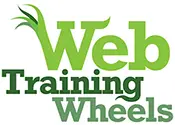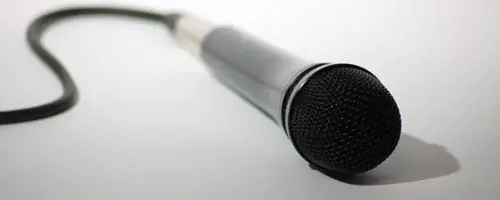Intro To Podcasting With WordPress
This a guest post by my friend and multimedia WordPress wizard, Jason Tucker. He streams live and archives the OC WordPress meetup group, and has recently launched a new Google Hangout and podcast show called WP Watercooler which you can watch live on Mondays at 11am PST, or you can catch the archive on the website and download the podcast via iTunes. He kindly agreed to share some of his wisdom here. Now over to Jason……
****
So you want to learn how to podcast? In this post I’ll go over some of the basics of podcasting using WordPress, a mic and some audio or video recording software.
What is a podcast?
Before I get into how to start your own podcast I think we should define what a podcast is. Wikipedia states the following:
A podcast is a type of digital media consisting of an episodic series of audio, video, PDF, or ePub files subscribed to and downloaded through web syndication or streamed online to a computer or mobile device. The word is a neologism derived from “broadcast” and “pod” from the success of the iPod, as podcasts are often listened to on portable media players.
So, in plain English, a podcast is a way for you to receive and then consume typically audio or video in an episodic fashion. I listen to quite a few podcasts – some are news focused, and others are either short stories or very long shows. I’ve listened to podcasts that are 5 minutes long all the way to 2 hours long. Either way, think of a podcast as setting a DVR to receive a show someone records and makes available at various intervals, typically every week.
So now that we know what a podcast is, how do we make one?
Basics of Creating a Podcast
Recording Software
Depending on if we’re recording Audio or Video you’ll need some way to capture you recording the show. Most people use a computer to record so its quicker and easier to do. We’ll begin with talking about audio and later we can come back around to video.
On a Windows computer I’ve used Audacity to do the recording. On a Mac I’ve used Garageband it is by far the best and cheapest way to record a high quality podcast.
Microphone
There is this saying, “crap in, crap out”. Just like with a photograph, the more time you put into this and the better the equipment you use the higher quality your finished product will be. If you use a cheap microphone your final product will either need a lot of work to make it sound good or you can just start out with better equipment, and it will make a world of difference. I’ve heard people record a show using the onboard microphone on their laptop and well, you can tell they did this due to how bad it sounds. I’m not saying this is a bad thing, but for a few dollars you can do a bit better. When I first started out I purchased a Condenser Microphone which sounds great, is very rich sounding and has a lot of body…. it also picks up EVERY sound in your room and some sounds from the outside as well. Without a sound proof booth it just didn’t work. My suggestion is to purchase a dynamic mic with a USB connection on it. Companies like Shure, Marshall, Blue and Rode make some great USB mics made for podcasters. Search around on Amazon.com looking for these brands and read all of the reviews on each.
Recording
Now that you have the software and the mic you can begin recording your first show. Your first episode, Episode Zero is going to suck, hands down. Unless you have previous recording experience and have sat at a news desk for a while or are just a natural public speaker it’s going to suck. This is why I call this one Episode Zero, do a run through of the recording and see how the format you’ve selected works for you and see if you can even get through the time you have allotted for yourself. Knowing that your first one isn’t going to be good will give you a bit more confidence in your next episode.
Delivering your podcast to the masses
Now that you have recorded your show or shows it’s time to get it on the internet and share your creation with the world. The first step is to install a podcasting software on your website. Here are some options if you are using WordPress.
For this example we’re going to go with PowerPress, it’s a great WordPress plugin that does all the necessary setup of your podcast in WordPress and makes things very easy to do. PowerPress comes from a company called Blubrry that also provides podcast hosting which costs but comes with some added features such as statistics and fast file hosting. There are other podcast hosting companies such as Libsyn that have competitive rates and have been in business for a long time. You can host your podcast files on your webhost but you’ll miss out on the additional statistics and fast download speeds they provide.
How Does A Podcast Work?
A podcast consists of 2 parts, an RSS feed which references of all of your podcast episodes, and the media files themselves. You record a mp3 file and either upload it to your website or host the file with a company like Blubrry. On your WordPress website you create a blog post which has the uploaded mp3 file associated with it, essentially each episode will have a blog post where your shows notes will be found. You provide iTunes with the URL of your RSS feed where it can find all of your podcast episodes. When a user subscribes to your podcast (subscriptions are free) their computer or device they will be downloading your podcast from will connect to your RSS feed and download all of the available episodes of your podcast and any subsequent episodes you create in the future.
Let’s review
WordPress has an RSS feed that references each of your podcast posts. Each of your posts can be episodes for your podcast. A user on iTunes subscribes to your podcast via a mobile device or a computer and periodically the episodes are downloaded.
Video Podcast
Video is very much like audio but with larger files and some additional requirements such as video dimensions and video codecs. MP4 video format is by far the best and most versatile format. The following dimensions are typical for video podcasts:
640×480 – Standard Definition 4×3 aspect ratio
960×640 – Standard Definition 4×3
1024×768 – Standard Definition 4×3
640×360 – Standard Definition 16×9 Wide Screen
1280×720 – High Definition 16×9 Wide Screen (otherwise known as 720p)
1920×1080 – High Definition 16×9 Wide Screen
The higher the quality the larger the file and the more it will cost you to host these files and provide them for your viewers.
When starting a video podcast it’s best to work with either a CDN (Content Delivery Network) or a podcast hosting company like Blubrry or Libsyn. All three of these options are paid solutions but enhance your viewers downloading experience as well as provide you with better statistics.
There are many options to editing video, I’ve seen folks use Windows Movie Maker on Windows and iMovie on the Mac. Video editing is a bit of a science and the better the software and the more skilled you become the better the video output will be.
In an upcoming post I’ll go over some of the software that people use for podcasting and how to bring in additional people via Skype for either audio and video as well as Google Hangout.
Speaking of Google Hangout, take a moment to visit my video webshow and audio podcast WPwatercooler.com (links to the Podcast and Youtube show are on the site). Your own Lucy Beer has been on the program a few times and always has great insight in the realm of WordPress. Check us out every Monday at 11am PST.
header image courtesy:
http://www.flickr.com/photos/visual_dichotomy/3623619145/sizes/o/
Weekly WordPress Tips To Your Inbox


Great article Jason!
Great post Jason! :)